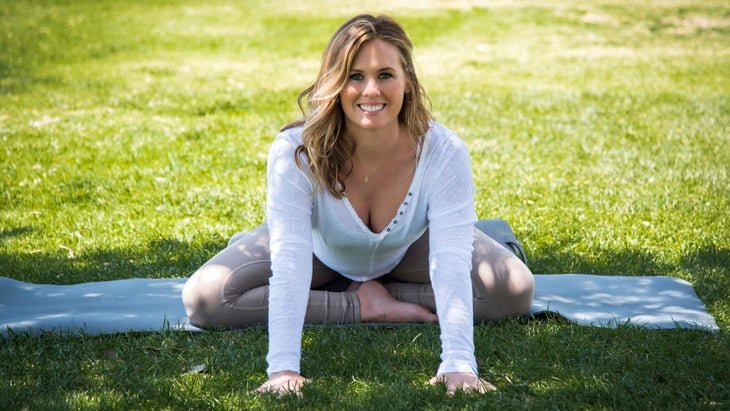“], “filter”: { “nextExceptions”: “img, blockquote, div”, “nextContainsExceptions”: “img, blockquote, a.btn, a.o-button”} }”>
It all starts at the foundation. During pregnancy the body is constantly shifting to accommodate the weight of the placenta, the increased blood volume, and the growing baby. As the abdominal muscles and the muscles of the outer hips begin to stretch and can no longer support the body with good structural integrity, other muscles take over and you begin to stand and walk in a way that you never have before. These postural changes—the pelvis tilts forward, the femurs move forward in the hip sockets, the psoas muscles get shorter and tighter, and the hamstrings lengthen—can create great discomfort in the low back, sacroiliac joints, and the hips. Furthermore, these changes directly affect the strength, health, and functionality of the pelvic floor—even after delivery. This is the source of the urinary incontinence (i.e., that peeing when you sneeze) that is so common for women after giving birth.
This practice brings awareness to the muscles that get compromised during pregnancy, keeping them awake and strong, maintaining balance in the body, strengthening the pelvic floor, and keeping the abdominal muscles from snoozing entirely!
Simple Seated Forward Fold
Sit on a support—a blanket, bolster, or block—and simply cross the legs into an Easy Seated Position. Anchor the sitting bones into your support. Inhale to lengthen the spine and exhale to fold forward making sure there is plenty of space for the belly. Bring the hands to the ground in front of you. Hold here for 6–8 rounds of slow steady breath. Then sit up, switch the cross of the legs and fold back in for 6–8 breaths.
See also Prenatal Yoga: A Pelvic Floor Sequence for an Easier Labor + Delivery
Cat/Cow Pose with a block

On all fours, place the wrists beneath the shoulders and the knees directly beneath the hips. The block will go in the longest, flattest position between the shins, closer to the ankles than the knees. Press the shins into the mat, anchor the pinkie toe side of the foot to the mat as you hug the inner ankle bone and shins to the block. Take Cat/Cow from here for 6–8 Breaths.
See also Prenatal Yoga: The Secret to Preventing Postnatal Saggy Butt
Downward-Facing Dog with block

From Cat/Cow, keeping the block between the shins, curl your toes under, lift the knees and hips to Downward-Facing Dog. Let the heels drop toward the ground while the sitting bones reach slightly toward the backs of the knees. Imagine you could draw the block between the shins up the legs. These 3 actions will awaken the pelvic floor and inner thigh muscles. Check out your feet, look to see that the pinkie toe side of the foot is lifting toward the outer knee. Hold for 6–8 breaths.
See also A Prenatal Chair Sequence to Ease the Discomfort of Pregnancy
Plank on knees with block

From Downward-Facing Dog, shift forward into Plank position and put the knees down. Reach the sitting bones toward the backs of the knees and hug the outer shins in to let the inner ankles reach toward the block. Hold for 2–3 breaths
See also Prenatal Yoga: An Imprint Flow for Strength and Space
Chaturanga on knees with block

From Plank on the knees, exhale and bend the elbows as much as you can keeping the shoulder heads back (not rounding forward but or below elbow height). Inhale to press up to plank and exhale back to Downward-Facing Dog.
See also Prenatal Yoga: 5 Psoas-Releasing Poses to Relieve Low Back Pain
Tadasana with block

Come to standing with the feet hip-width apart or a little bit wider, whatever feels best in your body. Place the block between the inner ankle bones and shins. You will need to adjust its position to accommodate the distance between the feet. As you hug the block, feel the weight in the feet. See if you can shift your weight, balancing left foot to right foot, ball of the foot to the heel, inner foot to outer foot. Then find center. Feel the feet ground into the earth, and the rebound lift of the legs as if you could draw the block up while the sitting bones lengthen toward the backs of the knees. Inhale to lengthen the spine, reaching the crown of the head to the sky. Externally rotate the arms, so the inner arm and palm of each hand face forward, and broaden across the collarbones. Hold here and breath for 6–8 slow, fluid rounds of breath.
See also Prenatal Yoga: 6 Feel-Good Backbends Safe for Pregnancy

